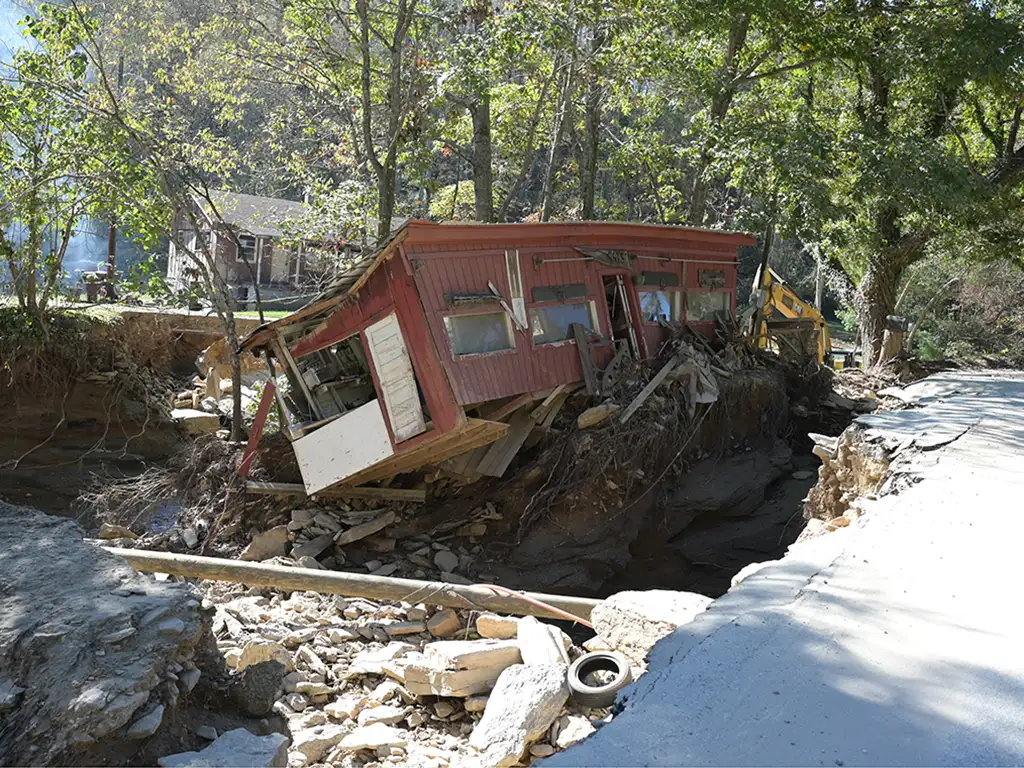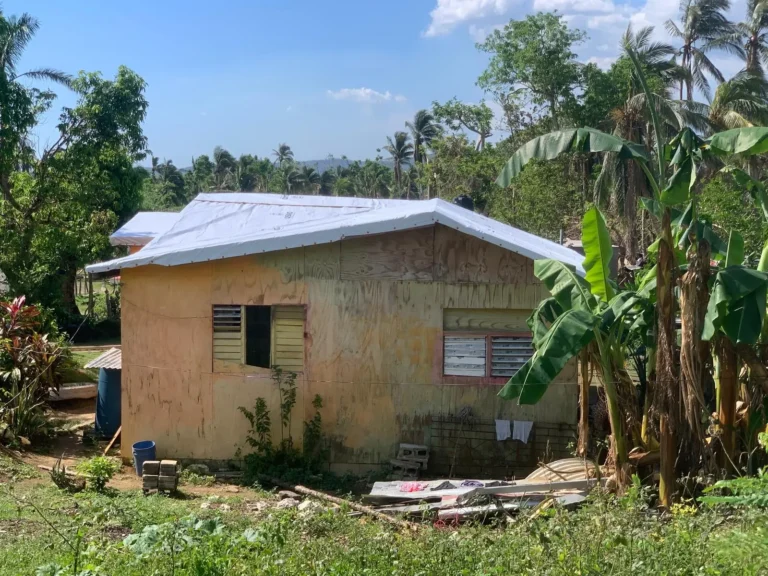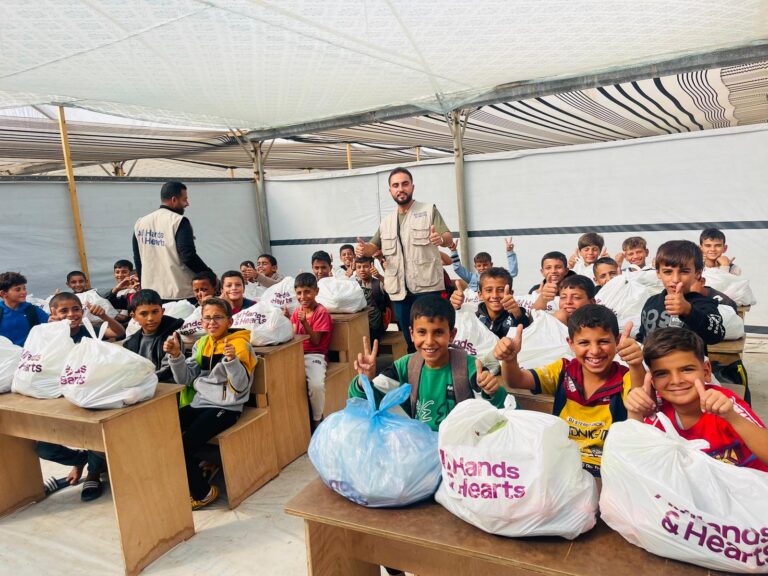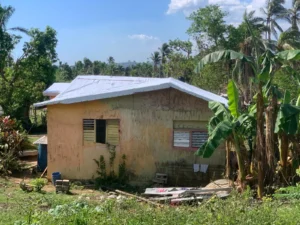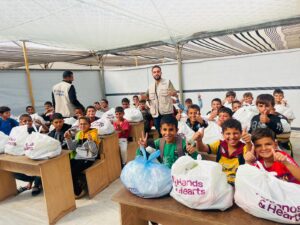With the skies clearing after another destructive hurricane, attention is already turning to the next weather system, in anticipation of what may be forming over the warming Atlantic waters. Four months into the 2024 hurricane season, the North American East Coast and its islands have been battered by a series of high-intensity, unprecedented storms, hitting regions that have rarely seen such devastation since records began.
Individuals remain on edge, bracing for what may come next in an increasingly unpredictable and intense hurricane season. Recovery efforts from the historic Hurricane Helene were halted in the face of another record-breaking storm, Hurricane Milton, less than two weeks after the first made landfall.
Communities can no longer pause to catch their breath during hurricane season. Between rebuilding their own homes, helping neighbors recover and evacuating from imminent threats, individuals and families are in a constant cycle of survival and recovery from increasingly menacing hurricanes.
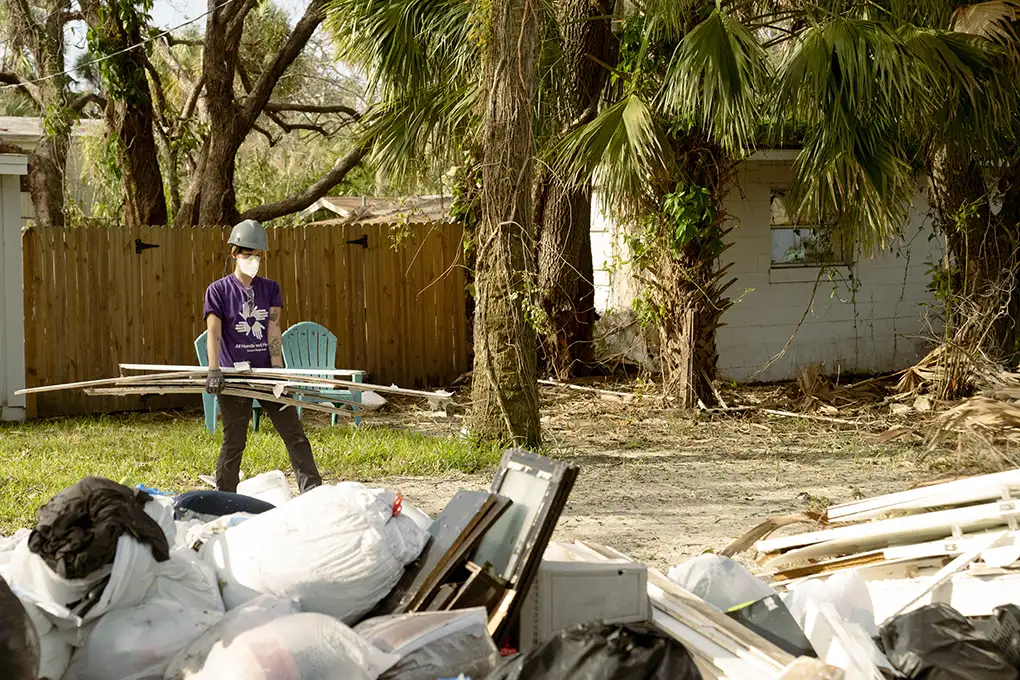

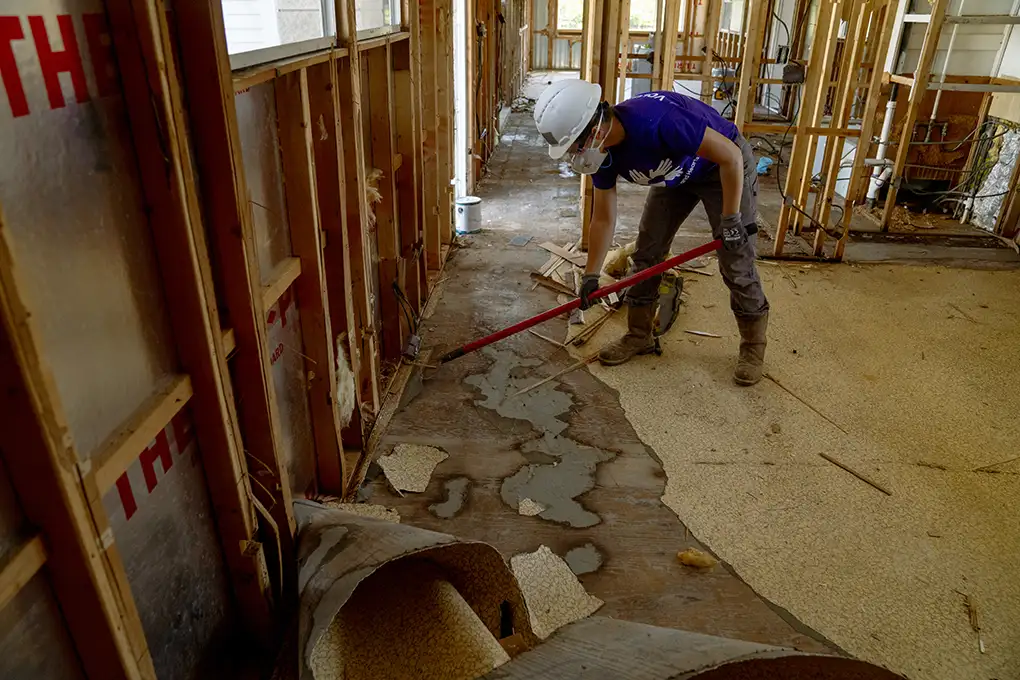
All Hands & Hearts’ volunteers support with debris removal and mucking and gutting in Pasco County, Florida after Hurricanes Helene and Milton.
2024: A Year Unlike Others
All Hands & Hearts (AH&H) is experiencing a hurricane season, unlike anything we’ve seen before in nearly 20 years of disaster relief work. Since the start of the season in June, an unusually warm Atlantic Ocean has been producing a relentless cycle of record-breaking storms. The effects of these hurricanes are showing up in regions hundreds, or even thousands, of miles away from the predicted impact zones.
There is a direct link between ocean temperature and hurricane strength. About 90% of the excess heat from human-caused climate change is absorbed by the ocean, providing more fuel for hurricanes. Warmer ocean waters act like gasoline for developing hurricanes, intensifying storm energy. As the atmosphere warms due to climate change, it holds more water vapor, which leads to heavier rainfall and wetter storm systems. This results in increasingly destructive storms. While the overall number of hurricanes may not be increasing, the ones that do form are more powerful and bring even more ferocious devastation. This cycle of increasingly powerful hurricanes is driven by human-induced climate change, which creates a feedback loop.
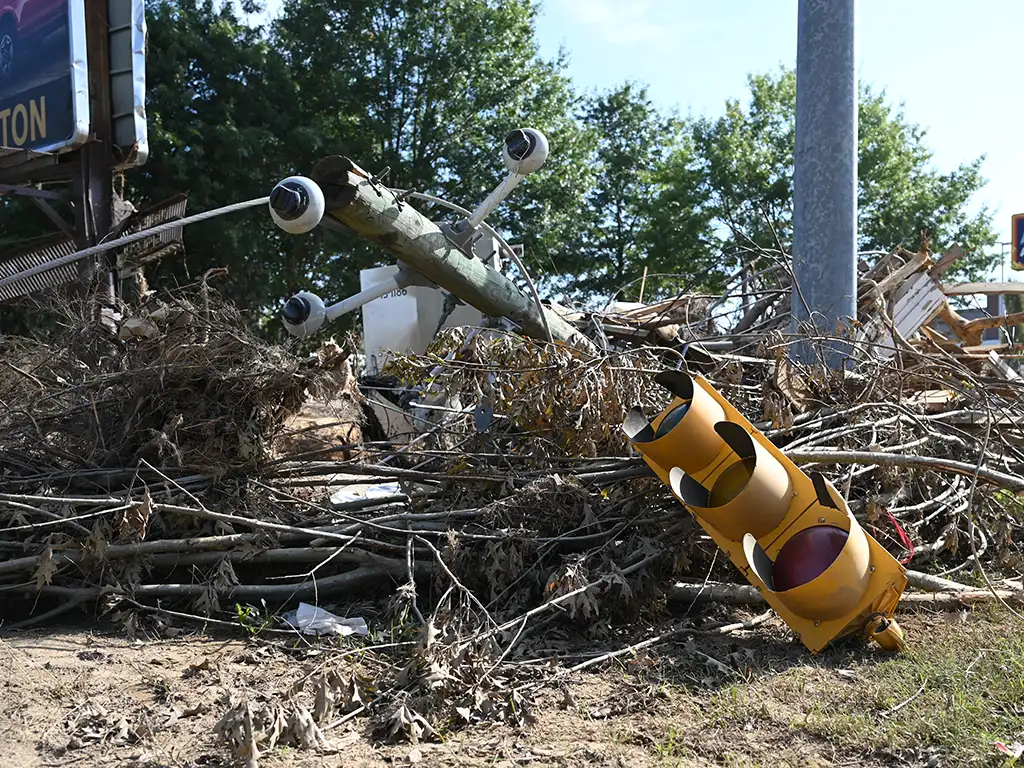
“This problem is not going away. It’s so important for organizations like All Hands & Hearts to help communities rebuild and be able to withstand the next storm.”
Dr. Marybeth C. Arcodia, Climate Research Scientist
AH&H Has Been More Active Than Ever
AH&H has been on the ground, positioning our Disaster Assistance Response Team (DART) outside each new storm’s path to mobilize quickly into some of the most severely impacted regions. We’ve strategically placed our teams to respond immediately after hurricanes make landfall, allowing us to begin work as soon as emergency responders deem it safe. In the critical days after impact, we have been assessing damage, clearing debris and liaising with local communities to join their recovery efforts, all in an effort to provide timely, effective aid throughout this unprecedented hurricane season.
Hurricane Milton
Hurricane Milton broke records as the fastest intensifying Category 5 hurricane in history. It was the second Category 5 hurricane of the 2024 Atlantic season, following Hurricane Beryl, the first major storm of the year. On October 8, it surged from a tropical storm to a Category 5 hurricane in less than 24 hours, fueled by the Gulf of Mexico’s unusually warm waters. Milton struck Siesta Key, Florida, on the evening of October 9, unleashing heavy rainfall and deadly tornadoes hundreds of miles from the eye of the storm.
AH&H quickly redeployed to Pasco County, Florida, after evacuating ahead of Milton’s landfall. Within days, our relief program was fully operational, addressing the urgent needs of communities hit by two hurricanes just weeks apart. Our teams have been working alongside local volunteers and the dedication of the local community continues to inspire us as we build strong connections in Pasco County.
Our work has involved debris removal, mold sanitation and muck and gutting homes. For homes where floodwaters reached heights of up to five feet, causing extensive damage, this work is essential. Our teams have been removing water-damaged materials to help homeowners on their road to recovery. As operations continue, we remain committed to supporting long-term recovery in the region.
Hurricane Helene
Hurricane Helene rapidly intensified from a tropical depression on September 20 to a Category 4 hurricane by September 25. It made landfall in Florida’s Big Bend region with a 15-foot storm surge, causing widespread destruction across multiple states, including inland regions hundreds of miles away. Flash flooding, wind damage and severe destruction to infrastructure prompted a federal emergency declaration across six states. In the western Appalachian mountains, the hardest-hit city of Asheville, North Carolina, had never experienced a disaster at this scale, let alone from a hurricane.
We’ve been on the ground in North Carolina since September 28, working tirelessly to support Hurricane Helene recovery efforts and have set up a base of operations in Asheville. One of the key needs we’re addressing is mucking and gutting homes after severe flooding submerged entire neighborhoods.

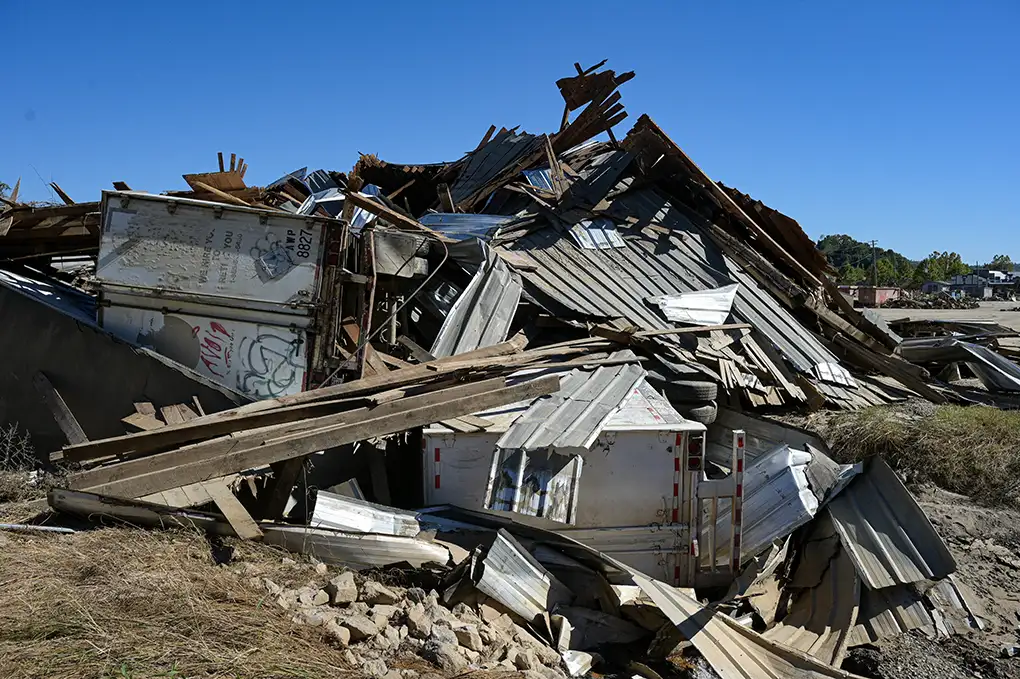
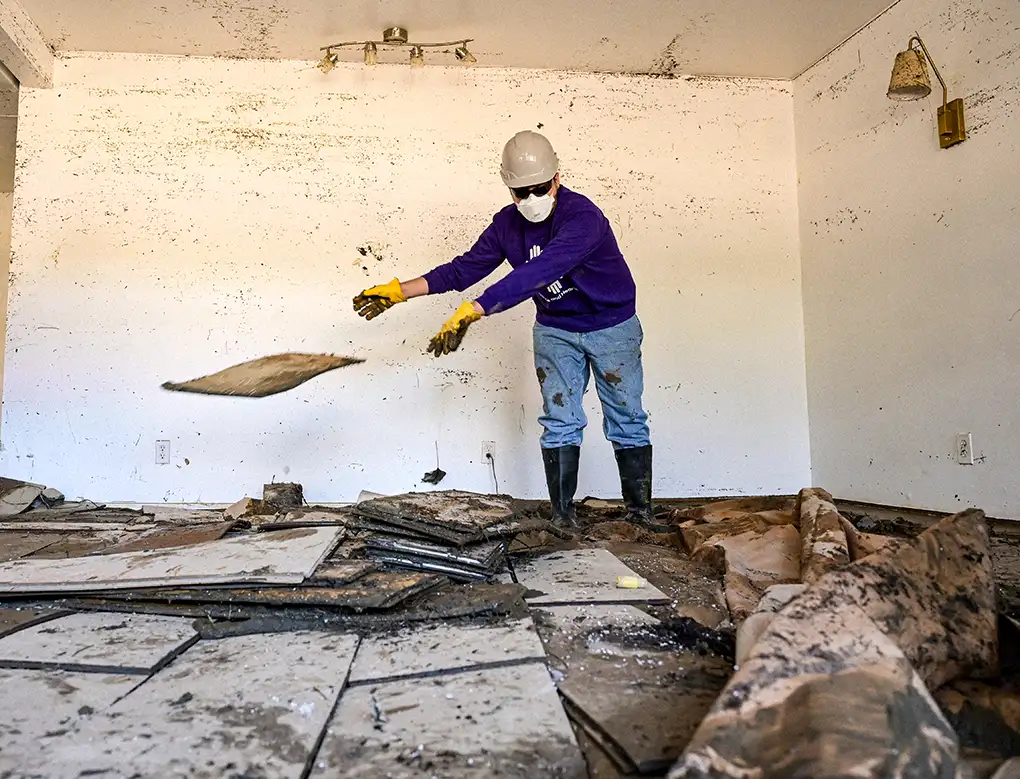
All Hands & Hearts’ responds to Hurricane Helene in North Carolina.
Hurricane Francine
Hurricane Francine made landfall as a Category 2 storm on September 11, bringing 100 mph winds, heavy rains, flash flooding and storm surge to coastal regions in Louisiana still recovering from past hurricanes. Powerful winds uprooted trees that triggered widespread power outages and cut off communities from aid in the early days after the storm. During our response in St. John the Baptist Parish, Louisiana, AH&H completed home muck and guts, debris removal and sawed fallen trees for removal. These efforts directly supported 184 individuals, while an additional 250 community members benefited from our support in food distribution.
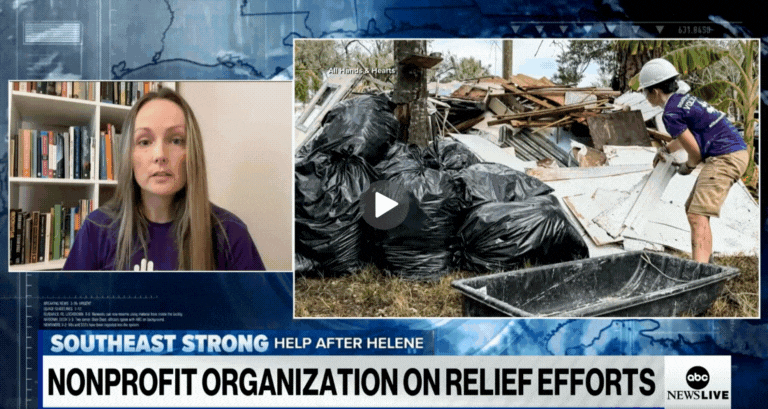
Hurricane Debby
Hurricane Debby, the second hurricane of the Atlantic season, formed weeks earlier than the typical second hurricane, which averages around August 26. After making landfall in Florida on August 5, it brought widespread flooding across the entire eastern U.S., where 35 million people from South Carolina to Vermont were under flood warnings. Many areas historically considered “safe” from hurricanes felt the devastating effects of torrential rains, even in mountainous regions located thousands of miles from the Gulf where the hurricane originated.
Northeast Vermont faced catastrophic flooding on July 10, brought on by the tail ends of Hurricane Debby and Beryl, leading to hundreds of evacuations and rescues and causing significant destruction to homes and businesses throughout the state. This disaster followed another record-breaking storm exactly one year previously, that caused extensive flood damage in the same region. AH&H responded by performing immediate muck and guts and mold sanitations for 13 households, while distributing dehumidifiers, fans and water-removing pumps to support immediate recovery.
Hurricane Beryl
Hurricane Beryl astonished scientists as the earliest recorded Category 5 storm to form in the Atlantic on June 28, and set the stage for a season of meteorological records. It brought widespread destruction throughout the Caribbean, bringing its most severe impacts to smaller islands in Grenada and St. Vincent and the Grenadines, with 98% of homes and buildings destroyed. After inflicting heavy damage in Jamaica, the Cayman Islands and Mexico, Beryl slammed into Texas as a Category 1 hurricane on July 8, bringing deadly winds, storm surges and flooding.
AH&H deployed our DART to Carriacou, Grenada, on July 8 for needs assessments and relief support. After seeing the extensive devastation across the island, AH&H opened a volunteer program from July 18 to August 9. In collaboration with local organizations and workers, our volunteer teams helped load over 50 trucks with cleared debris and assisted with home repairs at 28 residences. They partnered with World Central Kitchen in distributing over 80,000 meals, Samaritan’s Purse with essential supplies and the National Disaster Management Agency with street clean-up.
On July 12, AH&H arrived in Wharton, Texas, to help with hurricane recovery in collaboration with Hesed House. Over two weeks, the team cleared 23 fallen trees, removed debris, distributed fans and dehumidifiers, and helped a single mother by mucking and gutting her damaged home. In all, our responses to Hurricane Beryl directly impacted over 100 people.

